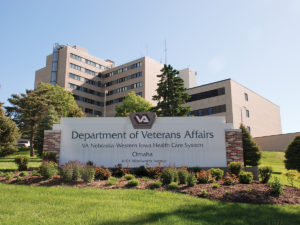
The Department of Veterans Affairs (VA), in an attempt to completely reform today’s veteran medical care system, wants to shift billions of dollars to private healthcare. The VA is one of the cabinet departments of the U.S. government and is in charge of handling the benefits for veterans or anyone related to them. The intention behind this movement is to help ease veterans’ access to healthcare in general by allowing them access to healthcare if they are located too far away from veterans’ hospital and by reducing the wait time, but it can backfire at anytime by being very inefficient as with past failed VA programs.
There is certainly an advantage with allocating billions of dollars to private healthcare providers, such as being able to choose your own doctor, but it’s also important for us to consider the negative secondary effects that will come along with privatizing healthcare in general. It’s also important to bring up the outcomes of past programs that were created by the VA but fell short of their promises, as well as the the detrimental effect on the economy it had as a result.
It should be more clear what the problem is with veterans’ hospitals after a past VA act known as the Choice Program failed to deliver promises of better quality healthcare. With the Choice Program, veterans were able to seek private health care if they did not live within a certain distance of a hospital or if they were face with a wait time of a month. The outcome of this program was far from what was expected. Research conducted by the Veterans Health Administration (VHA) showed that the average wait time for this program was about 51 calendar days. This report proves how the Choice Program was essentially ineffective because the wait time of the veterans to receive care was much higher than what it otherwise would have been.
Aside from inefficiencies in providing quick and proper care to veterans, the Choice Program was also overrun with systematic errors. In one instance, a veteran was referred to a specialist in California despite the fact that California is not his state of residency. Also, in another instance, a veteran was referred to a urologist, but he was set up to meet a doctor with a different speciality. Stories like these, in the context of receiving healthcare, seem extremely absurd because blunders like these should have never happened, especially when dealing with people’s lives and wellbeing.
There is also certainly a cost that comes along with expanding private healthcare in general. Privatizing health care comes at a very high expense and as a result, the burden on taxpayers would be tremendous because private health care is basically going to be run at taxpayers’ expense. Research conducted by the Congressional Budget Office (CBO) shows that it would cost about $8,600 per person on average to treat them including medications. In addition, the cost would also takes into consideration of the various supplies the hospital needs. The main beneficiaries of this act will be the giant corporate healthcare systems because they are using the money given from the government, which essentially comes out from the taxpayers’ pockets, to run their institution.
Wanting to find the means to achieve better medical outcomes should not be confused with wanting to entirely replace the VA healthcare system. There is clearly a difference between supplementing the VA hospitals and supplanting them. A study conducted by Dartmouth College showed that government care fared “significantly better” compared to private care. This goes to show how the quality of government care should not be underestimated and how it is important to give as much support as we can to the VA hospitals despite some shortcomings we’ve seen from them.
It would be a waste of time to shift billions of dollars to private healthcare systems if patterns point to the systems yielding inefficient results. We need to direct funding towards making the veterans’ hospital achieve higher quality services instead of solely finding ways to support the private sectors. Through the Mission Act, funds that are supposed to go the veterans’ hospital will instead be spent on private sector care because there isn’t any separate funding source for the private sectors. This automatically takes funds away from the VA budget and instead allocates them to private hospitals. Since the mission of the Mission Act from the start was to privatize healthcare, it would make sense that the funds that were allocated for the veterans’ hospital would go into private hospitals. As a result, the VA hospitals will be lacking in various resources including staff and medical equipment.
Possible steps that we can take to help combat the problems already created by the Choice Program can include bringing in more doctors and staff members to the Veterans’ hospital. A study conducted by a social scientist from Rand Corporation found that the VA healthcare system is short more than 30,000 clinical staff. Additionally, a big part of what the VA hospitals do is working to lower the high rate of veteran suicides. This proves how one of the major ways that we needed to address this problem was not to create the Choice Program nor pass the Missions Act since they weren’t successful in achieving the goals, but rather to make sure that the veterans’ hospital received adequate amount of funds to get all the resources they need. Especially, since a big part of the VA hospitals’ role is to lower veteran suicides, it would have been a great idea to use a great portion of the funds to address mental health.
After the Choice Program was launched and we saw the outcome, our politicians and lawmakers should have learned from that. Funding the Mission Act is basically repeating history. It’s highly unlikely for the new Community Care Program to succeed because the Choice Program was proven to be unsuccessful.








